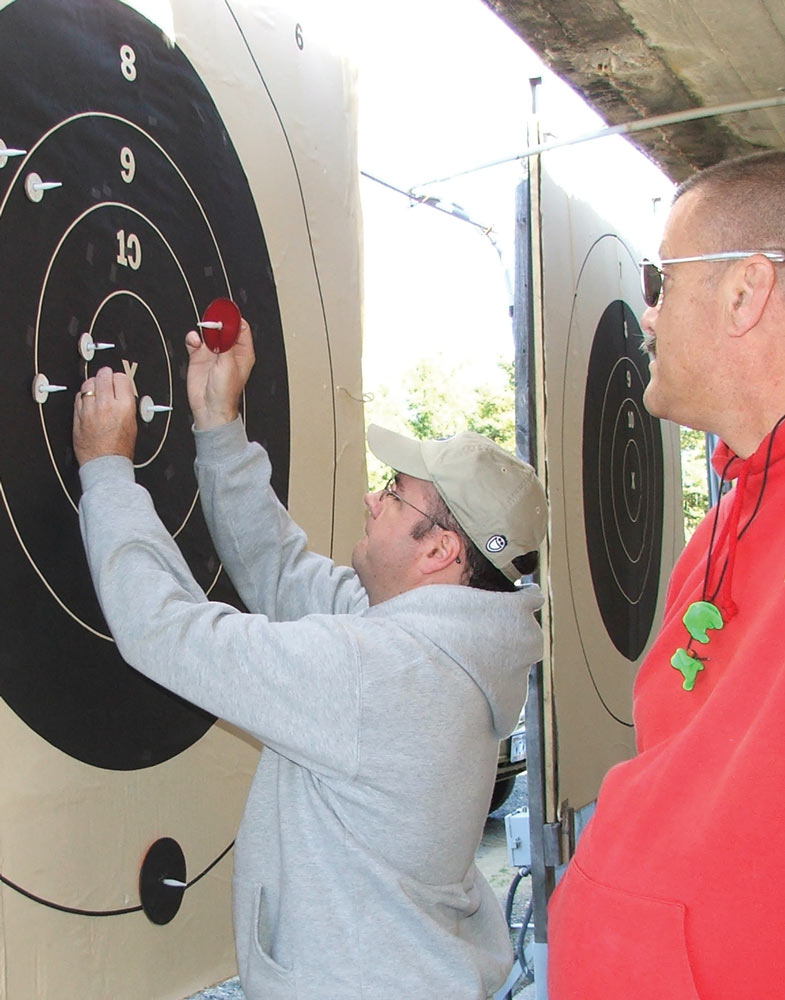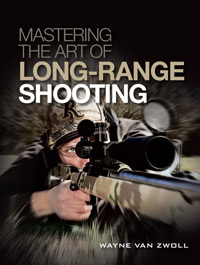

Dick Jones won the North State Regional 1,000 Yard Championship at Camp Butner, N.C., two consecutive years. The competitive shooter relays some of the tricks, tips and considerations of high-performance long-range shooting.
Going Long
I’ve been encouraged by the recent interest in long-range shooting. I enjoy almost every form of shooting, but precision position shooting has always appealed to me.
While I like the precision of benchrest competition because it involves extremely accurate rifles and ammunition, I prefer a broader kind of long-range shooting, where the skill of the shooter is more emphasized. Most of my competitive shooting career was in the field of NRA High Power, and my definition of long range might be different from someone from a different background.
In High Power, long-range shooting begins at 800 yards as part of the Palma course of fire. Mid-range shooting is done at 600 yards, and 200 and 300 yards are considered short range.
Also Check Out:
For most hunters and recreational shooters, any range beyond 300 yards is often considered long range, and this comes with good reason. Any shot at a game animal beyond 300 yards should only be attempted if the shooter has a good working knowledge of the trajectory of his rifle, and some idea of the effects of wind.
The primary reason for this is that a properly sighted-in rifle can stay within 4 inches of point of aim out to about 300 yards. In most situations, staying within 4 inches of point of aim is a reasonable goal and will suffice in most situations.
Knowing Your Zero
Beyond 300 yards, almost all rifles begin to require holdover or elevation adjustment, and the effects of the wind become much more critical. The ability to consistently make good shots at long range doesn’t require any special talent. It only requires preparation and judgment based on that preparation.
Once you’ve put the work in, there’s no excuse for not getting the elevation right. We now have range finders, ballistic calculators and even scopes with the elevation knob calibrated to the drop numbers of a specific load.
Even though all this information is quite good, there’s no substitute for actually checking the point of impact at different distances for assurances the numbers are correct. It’s been my experience that the numbers are almost always off a minute of angle or so, in most instances due to weather conditions, barrel length and other factors.

Windage
All the elevation information in the world won’t get you on target unless you can figure out what the wind is going to do to your bullet in the time it takes to get to the target.
At 1,000 yards, it takes a 180-grain Matchking from a 22-inch M1A barrel about two seconds to get to the target. By the time it gets there, my match loads were no longer supersonic, and dropped through the target with no supersonic snap. During this time, the bullet is high above the range.
Remember, to hit a target at 1,000 yards, I had to bring the sights up 38 minutes or about 34 feet. The trajectory takes the bullet even higher than this, so the wind the bullet is traveling through is not just a few feet off the ground.
When scoring and coaching at 1,000 yards, a good coach can pick up the trace of the bullet as it drops through the tree line behind the berm at Camp Butner and follow it into the target. This is a lot of exposure to wind. Miss the wind by 2 mph and you’re going to shoot an eight or seven. Miss the wind by 5 mph, and you’re off the paper with little chance of getting back on.
This all means the little wind meter you hold in your hand may not help. It only measures the wind where you’re standing, and that may be substantially different from the wind where your bullet has to pass.
On KD, or Known Distance ranges, there are normally wind flags, but the apparent angle of the flag can fool you based on your position on the range and these can be confusing. Probably the most reliable wind indicator is mirage, the refraction of light waves by heat.
Mirage indicates wind direction, speed in frequency and amplitude. I find it on average to be the most reliable way to gauge wind. Under certain conditions of low light, there can be an absence of mirage, so it can’t always be counted on.
 To properly read the amplitude and frequency of the mirage, you need some sort of horizontal line to compare. I like to read the top edge of the target, provided that’s a straight edge, as it is on a KD range. At 600 yards, this is a good representation of the space where the bullet spends the most time.
To properly read the amplitude and frequency of the mirage, you need some sort of horizontal line to compare. I like to read the top edge of the target, provided that’s a straight edge, as it is on a KD range. At 600 yards, this is a good representation of the space where the bullet spends the most time.
Remember to read an area above the target because it will give you a more realistic reading. Ground speeds tend to be lower than higher elevations where the bullet travels. When you read mirage through a scope, do so with the scope focused at mid-range to give a better representation of strength and direction.
The common theory is that deflection at short range has more affect because it’s exaggerated by the distance, but it’s been my experience that wind deflection has about the same effect through all the bullet’s flight because when the bullet is further down range, it’s going slower and therefore more affected. In competitive shooting situations, most long-range shooters fire their shots in a very short length of time, reducing the opportunity for wind changes.
Learning to reliably read wind is time consuming, and I don’t think there’s any other way to do it but to shoot in the wind in situations where you know within seconds where your last bullet went. Until recently, the only way to do this was to shoot on a range with pit targets where someone pulls and marks your target on every shot.
Now, there are several companies who make cameras that will transmit your group to your IPad, computer screen, or Smart Phone. Most of these devices even flash or mark the last shot. This is going to make learning to read wind a lot easier for those dedicated enough to actually shoot and pay attention.

Ammunition
Ammunition choices for long-range shooting are different from hunting or short-range shooting. The aerodynamic characteristics of the bullet become an issue of paramount importance, since the bullet stays in the air for such a long time.
Up to about 300 yards, the shape of the bullet has little effect on trajectory. This is because the trajectory at short ranges is based on the bullet at velocities very near muzzle velocity. Once you get past 600 yards, velocity falls off drastically and the falling rate of the bullet remains the same. As an example, the 600 yard zero on my M1A .308 was just 13 minutes higher from 200 yards to 600 yards but I had to add another 28 minutes to be on at 1,000 yards.
Of course, the effects of wind are similar but quite a bit more linear. Obviously, the faster the bullet travels, the less the effect of both wind and gravity because the time of flight to the target is shorter. This is why high velocity rounds are more popular with long-range shooters.
The problem with the extreme end of high velocity cartridges is throat erosion. Most of the hyper-velocity cartridges suffer will burn the accuracy out of a good barrel in under 1,000 rounds while rounds like .308 Winchester might get as much a 5,000 rounds.
Relating to barrel life is the practice among most conventional long-range shooters of not tailoring loads to a specific barrel/rifle. With a practical barrel life of no more than 1,000 rounds, load testing in lots large enough for statistical relevance to find the best load, could possibly use up the entire life of the rifle’s barrel. The normal practice is to find a load that works well and use it without spending time on load development for a specific rifle/barrel combination.
Putting It All Together
As complicated as all this sounds, long-range shooting is still simply a matter of learning how to accomplish a task, and using that knowledge to accomplish it. No two shots are ever quite the same, and successful long-range shooting requires good skills and equipment, but it’s one of the most rewarding of all the aspects of shooting. Once you’ve put a shot exactly where you want at 1,000 yards, you’ll always remember the feeling, and if you’re like me, you’ll want to do it more than one time.
Editor's note, this article original appeared in the March 27, 2014 edition of Gun Digest the Magazine.
Mastering the Art of Long Range Shooting
You’ll love this long range shooting guide if:
- You are at any skill level and want to learn more about improving your accuracy
- You’re interested in the science behind shooting long distance
- You want to meet and beat standards for competitive shooting, hunting, and battle


![Best Concealed Carry Guns In 2025 [Field Tested] Wilson Combat EDC X9S 1](https://gundigest.com/wp-content/uploads/Wilson-Combat-EDC-X9S-1-324x160.jpg)


![Best 9mm Carbine: Affordable PCCs [Tested] Ruger Carbine Shooting](https://gundigest.com/wp-content/uploads/Ruger-Carbine-Shooting-100x70.jpg)
![Best AR-15: Top Options Available Today [Field Tested] Harrington and Richardson PSA XM177E2 feature](https://gundigest.com/wp-content/uploads/Harrington-and-Richardson-PSA-XM177E2-feature-100x70.jpg)

Nice intro article on this from a man that truly knows. Thanks!
Appreciate the feedback, sir! We’re always looking for feedback on articles that people can relate to. Dick Jones is one of our go-to contributors.